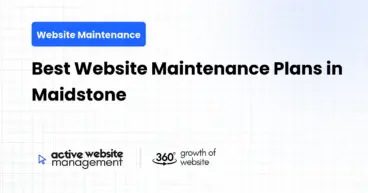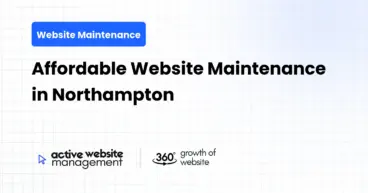December 12, 2024
7 min read
Gatsby is a static site generator that allows developers to create high-speed websites using React. Unlike traditional CMS platforms, Gatsby generates static HTML files during the build process, ensuring that pages load instantly in the browser. This makes Gatsby websites incredibly fast, which is one of the key reasons developers choose it for building websites. However, maintaining a Gatsby website requires a proactive approach, as the website’s performance, security, and content can degrade over time if not properly managed.
In this article, we’ll walk you through everything you need to know about maintaining and managing your Gatsby website effectively.
1. Understanding Gatsby’s Core Features
Before diving into the specifics of website management, let’s first understand what makes Gatsby unique and why it’s important to maintain these features.
Static Site Generation
Gatsby’s static site generation (SSG) ensures that once the content is built, it is served as static HTML files, which are extremely fast to load. This feature significantly reduces the load time of your website, improving both the user experience and SEO performance.
React Integration
Gatsby uses React, one of the most popular JavaScript libraries for building user interfaces, to create components. This makes it easy for developers familiar with React to build highly interactive websites while still benefiting from the speed of static pages.
With that in mind, keeping your React components and related dependencies up-to-date is crucial for maintaining the performance and security of your website.
Don’t Just Maintain Your Website—
Grow It using Active Website Management! Don't Wait for Growth—Accelerate It with Active Website Management
2. Managing a Gatsby Website
Once your Gatsby site is up and running, there are several ongoing tasks you’ll need to manage to ensure the site continues to perform well.
Keeping Dependencies Updated
One of the key responsibilities in managing a Gatsby website is ensuring that all the dependencies, plugins, and packages are kept up-to-date. Gatsby, like any other modern web framework, depends on various libraries and plugins that contribute to its overall functionality.
How to Keep Dependencies Updated:
- Run Regular Updates: Use the
npm outdated or yarn outdated command to check for outdated dependencies. - Use Semantic Versioning: Pay attention to the versioning of packages. Aim to upgrade to newer versions that don’t introduce breaking changes.
- Automate Updates: Use tools like Renovate or Dependabot to automate the process of dependency updates.
Regularly updating your dependencies is crucial for improving performance, fixing bugs, and, most importantly, ensuring that your website remains secure. If you’re unsure about specific updates, test them in a development environment first before pushing them live.
Regular Content Updates
While Gatsby sites are static, they can still be updated frequently with new content. This could include blog posts, images, or product listings, depending on your website’s nature.
How to Update Content in Gatsby:
- Markdown Files: If you’re using Markdown for content (common with Gatsby’s default content sourcing methods), simply edit the respective Markdown files in the
content folder. - CMS Integration: Many Gatsby sites integrate with headless CMS platforms like Contentful, Sanity, or Strapi. These allow content to be updated without touching code directly.
- Git-Based Workflows: Content updates often require updating and committing changes through Git. Make sure your team is familiar with this process to avoid conflicts.
3. Maintaining Performance
A key advantage of Gatsby is its emphasis on performance, but it’s still crucial to ensure that your site remains fast as it grows. Here are some essential tips for maintaining your site’s performance:
Image Optimization
One of the most effective ways to improve site performance is by optimizing your images. Large, unoptimized images can significantly slow down your website.
How to Optimize Images:
- Use Gatsby Image Plugin: Gatsby provides a powerful image optimization tool,
gatsby-plugin-image, which ensures that images are loaded in the most efficient way possible. - Lazy Loading: Lazy loading allows images to load only when they are visible on the screen, reducing initial page load time.
By optimizing images, you can significantly improve your site’s load times, which directly impacts both SEO and user experience.
Code Splitting and Lazy Loading
Gatsby automatically splits your code into smaller chunks, but it’s important to ensure that your site is taking full advantage of this feature. This process ensures that only the necessary code is loaded for each page.
Tips for Code Splitting:
- Use Dynamic Imports: For large components that aren’t immediately necessary, use
React.lazy to dynamically load them. - Prefetching: Gatsby automatically prefetches pages that are likely to be visited next. You can take further control by manually adding prefetch hints.
These practices can significantly enhance your site’s loading time and overall performance.
4. Security Best Practices
Security is paramount for any website, and Gatsby is no exception. Here are some essential security practices to keep in mind:
- Keep Dependencies Up-to-Date: As mentioned earlier, keeping your dependencies updated is crucial for security. Old versions of libraries may have vulnerabilities that could be exploited.
- Use HTTPS: Always serve your website over HTTPS to ensure that data is encrypted and secure.
- Content Security Policy (CSP): Implement a strong content security policy to prevent cross-site scripting (XSS) and other malicious attacks.
- Limit Access: If your Gatsby site is connected to a headless CMS, limit access to only trusted users and secure the CMS with strong passwords and two-factor authentication (2FA).
5. SEO Considerations for Gatsby Websites
Gatsby offers excellent SEO features out of the box, but proper SEO management is still necessary for your site to rank well in search engine results.
Key SEO Practices for Gatsby:
- Metadata Optimization: Make sure each page has proper meta tags like title, description, and Open Graph tags.
- Schema Markup: Implement structured data using JSON-LD to help search engines understand your content better.
- Sitemap and Robots.txt: Use the
gatsby-plugin-sitemap and gatsby-plugin-robots-txt to generate a sitemap and control how search engines crawl your site.
Don't Wait for Growth—Accelerate It with
Active Website Management Don't Wait for Growth—Accelerate It with Active Website Management
6. Active Website Management
Active website management involves ongoing monitoring and optimization to ensure that your website is always up to par.
Website Monitoring
Regularly monitor your website’s performance, uptime, and security. You can use tools like:
- Google Analytics: Track user behavior, page views, bounce rate, and more.
- Uptime Robot: Monitor your site’s uptime and receive alerts if it goes down.
Monitoring ensures you catch issues early and keep your website running smoothly.
Analyzing User Behavior
Use tools like Google Analytics or Hotjar to understand how visitors interact with your site. This data can help you optimize your site for better engagement and conversions.
By understanding user behavior, you can make informed decisions on which areas of your site need improvement.
7. Backup and Recovery Plan
While Gatsby sites are generated statically, it’s essential to maintain a backup and recovery plan for both the website content and the underlying code.
Backup Tips:
- Version Control: Always use a version control system like Git to track changes to your codebase.
- Content Backups: If you’re using a headless CMS, make sure to back up your content regularly.
- Automated Backups: Consider using tools like GitHub Actions or GitLab CI/CD to automate the backup process.
Having a backup plan ensures that you can recover quickly in case of an emergency.
8. Common Issues and Troubleshooting
Even the most optimized Gatsby sites can encounter issues from time to time. Here are some common problems and how to troubleshoot them:
- Build Failures: Ensure that your dependencies are up-to-date and check for errors in the console logs.
- Slow Build Times: Optimize your content and reduce the number of queries being executed during the build process.
- Missing Content: If you’re using a CMS, ensure that your data sources are connected and that your queries are running correctly.
9. Conclusion
Managing and maintaining a Gatsby website requires diligence and ongoing effort. By regularly updating dependencies, optimizing content, ensuring security, and monitoring performance, you can keep your website running smoothly and efficiently. Active management not only helps improve the user experience but also ensures that your website stays relevant, fast, and secure.






